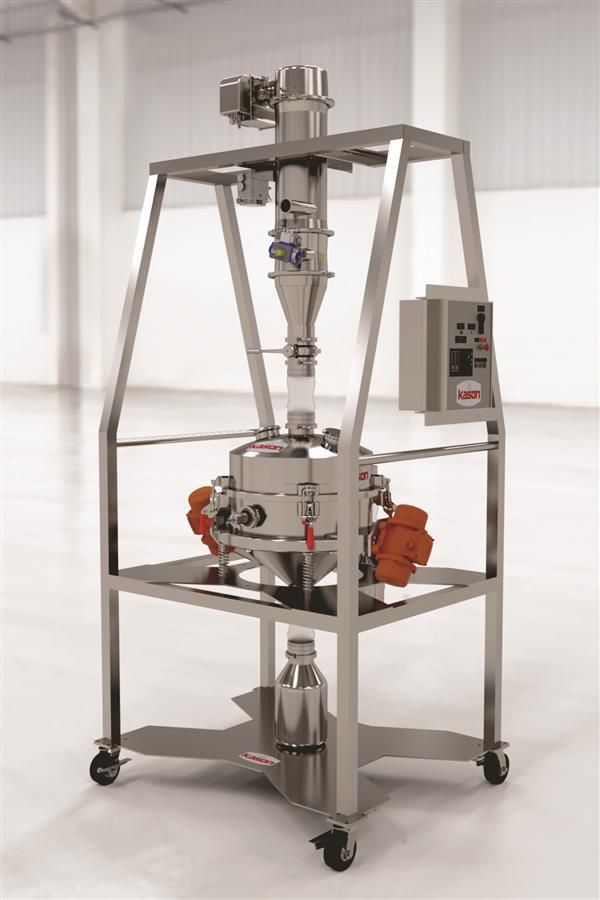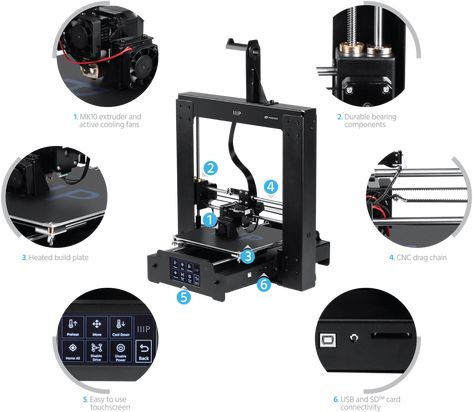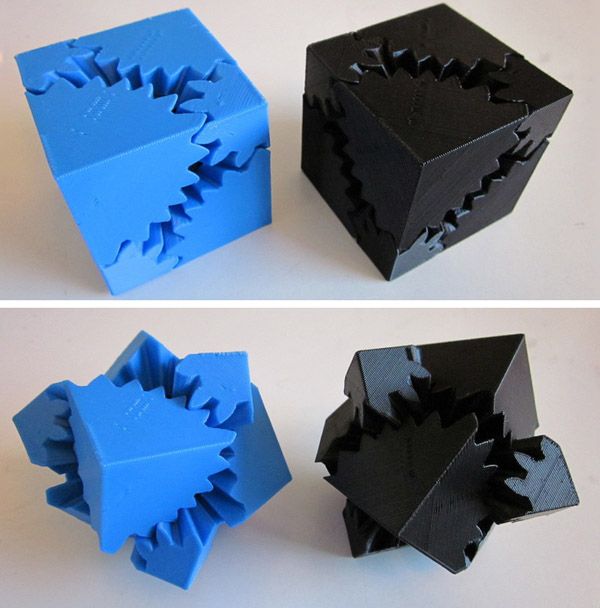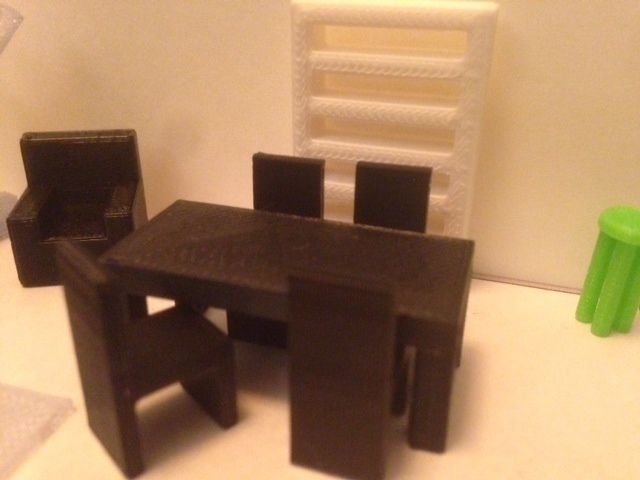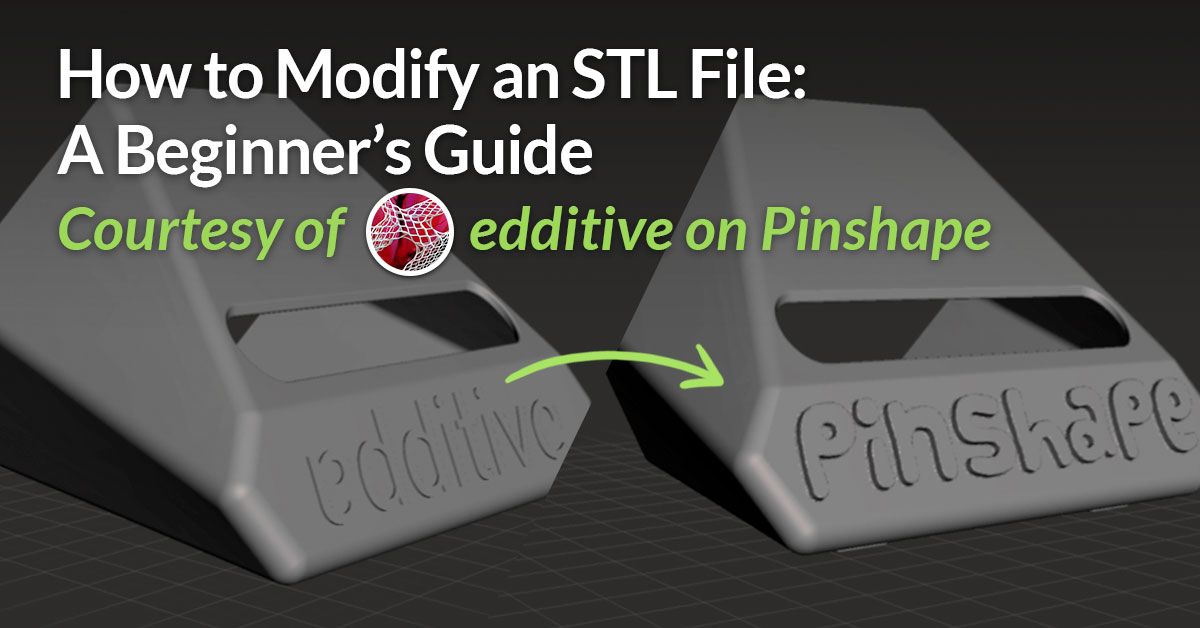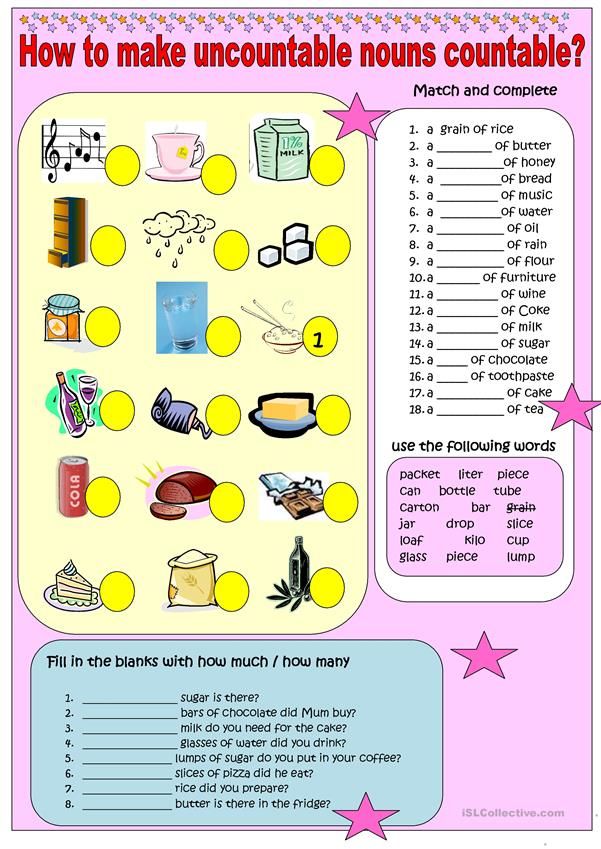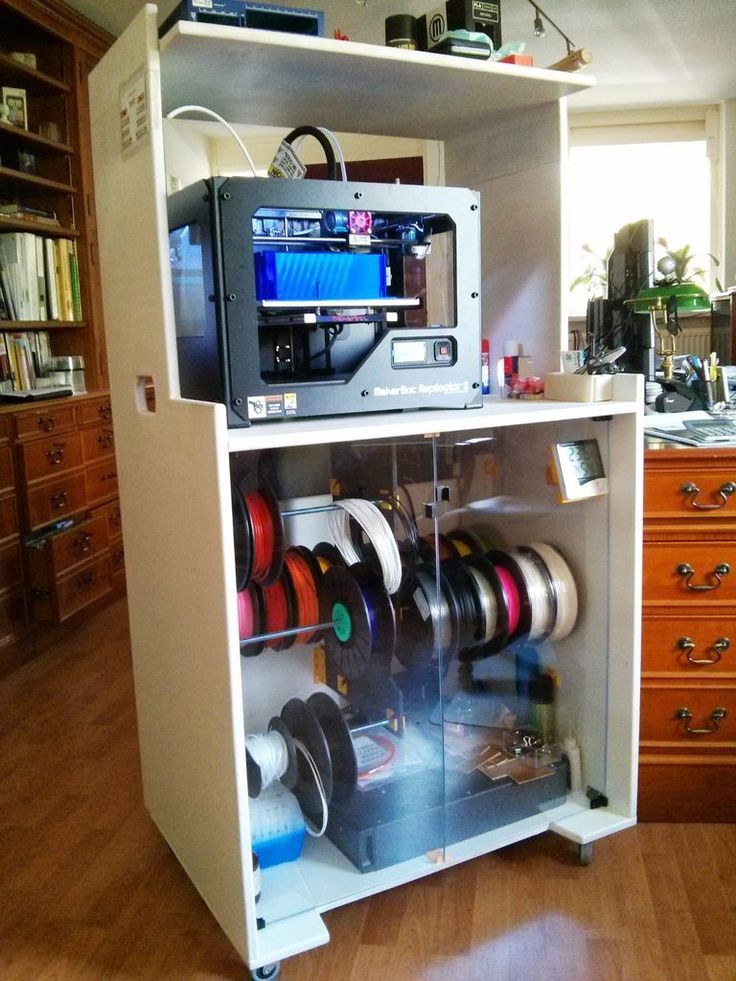Metal powders for 3d printing
3D Printing Metal Filaments and Powders
There are two main drivers of whether or not a metal alloy is printed today: printability and demand. Though there are a wide variety of metal 3D printing processes out there, nearly all rely on metal powders. These materials take two forms in printing: raw 3D printing metal powders, or bound powder 3d printing metal filament. As a result, the metal materials printable today are to a large degree constrained by powder availability and whether or not that powder can be effectively bound. Aluminum, as an example, is notoriously difficult to print well and is as a result relatively uncommon.
Metal 3D printing is useful for parts that are tricky to machine, either in complexity or material, because especially at low volumes it can be cheaper. Harder materials like stainless steels, tool steels, titanium, and others are more difficult to work with and require higher quality tooling, better machines, and more overhead costs. The added natural manufacturing costs adds to the relative value that 3D printing provides, allowing them to cross the "inflection point" at which 3DP becomes valuable. On the other side of the spectrum, materials that are easy and cheap to machine (low grade steel, aluminum), aren't as in demand because it's already easy to make them. This forms a grouping of "common" metal printing materials that are traditionally really hard to work with, made simple by additive instead of subtractive.
What are the most common metals for 3D Printing?
- Stainless Steels (17-4 PH, 316L, 304)
- Tool Steels (h23, A2, D2)
- Specialty Alloys (Inconel, Cobalt Chromium, and others)
- Titanium (Ti64)
- Aluminum (4047, 6061, 7075)
Steel 3D Printing
Steel is the most common metal 3D printing material. Its strength, ability to be turned into 3D printing metal powder, relatively low cost, and post-processability make it a material usable in many applications. Most varieties of steel can be printed: the two most common are stainless steels and tool steels. Not all steels are commonly printed -- Alloy steels, which are the most common to fabricate conventionally, are rarely printed. Due to their lower conventional fabrication costs and inferior material properties, they’re not as valuable of a material to print.
Due to their lower conventional fabrication costs and inferior material properties, they’re not as valuable of a material to print.
Stainless Steels
Stainless steels are strong, stiff steels that possess excellent corrosion resistance due to their significant Chromium content (at least 12%, often up to 18%). They come in two different varieties, austenitic and martensitic.
A stainless steel lattice, printed with a Selective Laser Melting printer. Image from Axom.Austenitic stainless steels are the most common type of stainless steel. They’re corrosion resistant and can be both machined and welded, though they cannot be heat treated. 303 and 304 are the most common types of austenitic stainless steels, and 316L is a variant that maximizes corrosion resistance.
Martensitic stainless steels are much harder than austenitic steels, but more brittle and less corrosion resistant. As a group, they lack the general versatility of austenitic steels -- however, they can be heat treated and precipitation hardened. They’re best when you need a hard and stiff stainless steel. 17-4 PH is a particularly useful type of martensitic stainless steel that can be heat treated to fit a variety of material properties -- it’s also the most common martensitic steel, though others (like 420) are also printed.
They’re best when you need a hard and stiff stainless steel. 17-4 PH is a particularly useful type of martensitic stainless steel that can be heat treated to fit a variety of material properties -- it’s also the most common martensitic steel, though others (like 420) are also printed.
Tool Steels
Tool Steels are named for their central application -- tooling of all varieties. They contain carbide, an extremely hard compound that’s critical to their ability to cut, grind, stamp, mold, or form. Generally, they’re very hard, abrasion resistant, and usable at high temperatures. Tool steels are categorized by the AISI-SAE grading systems, divided into types by function. The three types most commonly metal 3D printed are A series, D series, and H series tool steels.
Tools steels are often uses for stamping, pressing, and other metal forming applications. Image from ultrastamping.A Series tool steels are great general-use tool steels -- they balance wear resistance and toughness and are machinable.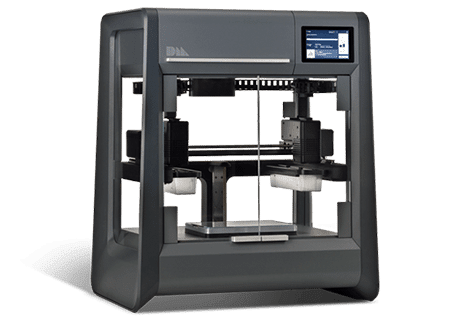 There are eight varieties of A Series tool steels, the most common of which is A2. It’s a versatile tool steel often used to make punches and dies, but usable in a wide variety of applications.
There are eight varieties of A Series tool steels, the most common of which is A2. It’s a versatile tool steel often used to make punches and dies, but usable in a wide variety of applications.
D Series tool steels are optimized for wear resistance and hardness. They’re not particularly tough, and only used for cold work applications. The most common variety of D Series tool steel is D2 -- it’s used for all kinds of cutting tools, from blades to industrial cutting tools and even knives.
H Series tool steels cut and shape material at high (or cycling) temperatures. They’re not as wear resistant as A or D Series tool steels at low temperatures, but hold their strength and stiffness well in increased heat. Though there are many types of H-Series tool steel, h23 the most common 3D printed variety. Its mix of excellent toughness, wear resistance, and heat resistance make it a good general use tool steel that’s optimized for use in high temperatures (hot working).
Titanium 3D Printing
While Titanium is by no means a common material to fabricate conventionally, its unique properties and high base cost make it a great candidate for 3D printing. It’s strong, incredibly lightweight, heat and chemical resistant, and can be biocompatible. Though there are a few different types of Titanium that can be printed, one is by far the most common: Titanium 64 (Ti-6Al-4V).
A custom titanium bike part 3D printed with an SLM machine. Image from Spencer WrightTi64 is the most common type of Titanium in both 3D printing and conventional fabrication. It possesses an excellent strength to weight ratio and can be heat treated to further improve strength. The material also excels in adverse environments due to its corrosion and heat resistance. As a result, it’s used heavily in aircraft (missiles, rockets, airplanes) medicine (as orthopedic implants) and other places where high strength to weight ratio is beneficial.
Aluminum 3D Printing
Aluminum is notoriously difficult to print.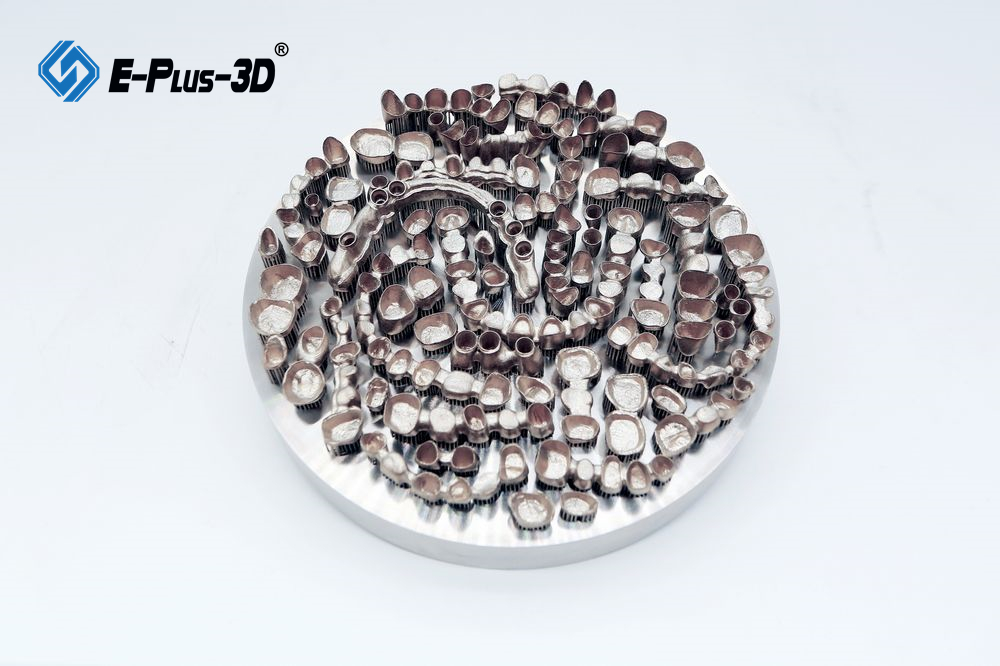 As a result, it’s a relatively uncommon printing material despite being exceedingly common in conventional fabrication. The varieties that are printed are generally casting grade aluminum, not more common machinable types like 6061 or 7075. These casting grade aluminum alloys all contain significant (up to 12%) Silicon content, and are weaker and less stiff than 6061. It’s not immediately clear when Aluminum will become more readily available as a 3D printing material, but until then materials like steel and titanium achieve similar strength to weight ratios when printed with open cell infill.
As a result, it’s a relatively uncommon printing material despite being exceedingly common in conventional fabrication. The varieties that are printed are generally casting grade aluminum, not more common machinable types like 6061 or 7075. These casting grade aluminum alloys all contain significant (up to 12%) Silicon content, and are weaker and less stiff than 6061. It’s not immediately clear when Aluminum will become more readily available as a 3D printing material, but until then materials like steel and titanium achieve similar strength to weight ratios when printed with open cell infill.
Specialty Alloys
In addition to more common metals, 3D printers can also fabricate parts out of alloys uniquely suited for hostile environments. These “superalloys” -- metals that exhibit high strength, heat resistance, good surface stability, and resistance to corrosion or oxidation -- can be used in a wide variety of high performance applications. Two subgroups are most common: Inconel and Cobalt Chrome.
Inconel
Inconel is the most common and best known proprietary nickel alloy. It’s an extremely strong, stiff, and corrosion resistant material used in places like turbines, engine seals, and rockets. There are two main formulations that are 3D printed: Inconel 718 is stronger and tougher, and Inconel 625 is more heat resistant. Both materials are incredibly expensive to machine conventionally, making 3D printing a cost-effective alternative to fabricating high fidelity parts.
Cobalt Chrome
Cobalt Chromium is a superalloy known for its biocompatibility, high strength to weight ratio, and corrosion resistance -- it’s essentially a higher-grade, more expensive version of Titanium. Like Inconel, it’s used in turbines and other hostile environments. Unlike Inconel, it can be used in medical applications as orthopedic or dental implants.
Looking Forward
The long term success of metal printers hinges to a large degree on their ability to support a wide variety of materials reliably.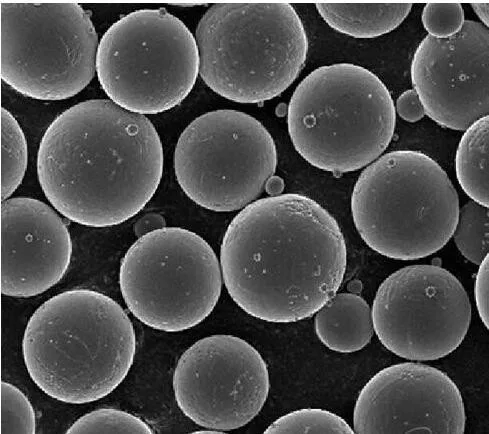 The current list is short and focused on higher grade materials that are financially beneficial to fabricate now. However, as metal 3D printing matures, expect to see more and cheaper metal 3D printing filaments and powders available across different metal printing platforms. These materials in turn will open up new applications for metal printing, furthering its adoption by the manufacturing masses.
The current list is short and focused on higher grade materials that are financially beneficial to fabricate now. However, as metal 3D printing matures, expect to see more and cheaper metal 3D printing filaments and powders available across different metal printing platforms. These materials in turn will open up new applications for metal printing, furthering its adoption by the manufacturing masses.
Metal Powders for 3D Printing
Metal powders are metals that are reduced to fine particles and are the preliminary base materials for most 3D printing processes that produce metallic parts. 3D printing, also known as additive manufacturing (AM), is the manufacturing of parts and products in a layer-by-layer fashion. Both the characteristics of the metal powder and the type of the 3D printing process determine the properties of the end product. Powder characterisation takes place depending on the way it is produced, which may result in different particle morphology and purity.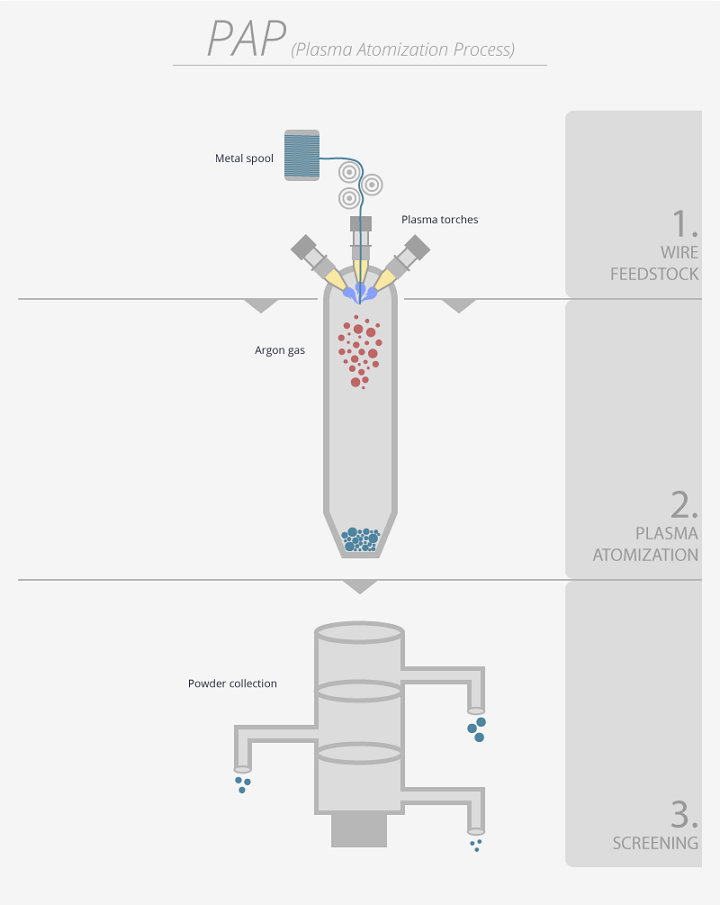
Here, you can learn about what characterises metal powders, how they are produced, and what 3D printing methods and applications employ such powders.
Characteristics of metal powders
To guarantee accurate reproducibility in metal component production, metal powders have to display consistent characteristics [1]. The primary characteristics are size distribution and morphology. Other technological and physico-chemical characteristics include density, compressibility, sintering ability, chemical composition, green strength, surface area, flowability, and thermal properties [2]. Figure 1 shows the distribution of different metallic materials based on two mechanical properties, yield strength and hardness.
Figure 1: Mechanical properties of metallic materials – minimum values from data sheets. Retrieved from Ref. 3.
One of the main assumptions for metal powders in 3D printing is that they are nominally spherical and have a certain size distribution that allows them to be well packed, which results in a dense product with good and desired mechanical properties. In other words, the particle size – which determines the smallest possible layer height to achieve – and particle shape, in addition to the powder’s level of purity, play a crucial role in controlling the powder quality.
In other words, the particle size – which determines the smallest possible layer height to achieve – and particle shape, in addition to the powder’s level of purity, play a crucial role in controlling the powder quality.
Production of metal powders for 3D printing
To produce metal powders with the desired characteristics and powder quality and depending on the required properties of the metallic components to be manufactured from the powder, the selection of the powder production process may differ.
Metal powders can be produced using several methods, some of which are solid-state reduction, milling, electrolysis, chemical processes, and atomisation. Yet, because it produces the most geometrically convenient powders for 3D printing, atomisation has been historically regarded as the best method for producing metal powders for AM.
Atomisation can be performed through, but not limited to, three different processes: water atomisation, gas atomisation, and plasma atomisation. Water atomisation, however, results in particles with a highly irregular morphology as the particles solidify faster than their spheroidisation time, which renders the process not suitable for specialised AM [4].
Water atomisation, however, results in particles with a highly irregular morphology as the particles solidify faster than their spheroidisation time, which renders the process not suitable for specialised AM [4].
Gas Atomisation
In this process, the feedstock alloy, usually in ingot form, is melted in a furnace; usually, a vacuum induced melting (VIM) furnace to monitor interstitial elements. The furnace is positioned above the atomisation chamber for direct material discharge into the atomiser. As the melt falls down through the chamber, high-pressure gas jets are sprayed to atomise the material, which solidifies as spherical powder particles, and is collected at the bottom. The gas medium used is usually an inert gas, such as nitrogen or argon, to minimise oxidation and contamination possibilities. Air could also be used as a gas medium. The particle size distribution (0-500 μm) can be modulated to a certain extent by adjusting the ratio of gas to melt flow rate. Some of the powder material produced by gas atomisation are nickel, iron, aluminium, and cobalt.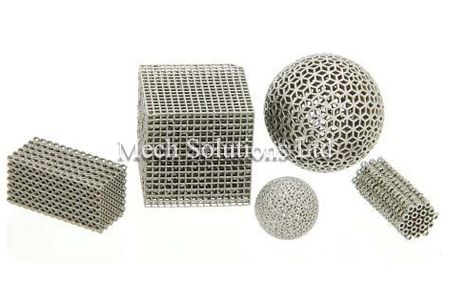
When processing reactive alloys, like Ti-6Al-4V, there is a high contamination risk if the material gets exposed to the atmosphere or crucible. One way to reduce that risk is by introducing the metal into the atomiser as a rod, melted by a surrounding induction coil prior to entry. This method is called electrode induction melting gas atomisation (EIGA) [4].
Plasma Atomisation
Here, the feedstock is fed into the atomisation chamber in two possible forms, wire or powder form. In the chamber, co-axial plasma torches and gas jets melt and atomise the material at the same time, resulting in extremely spherical powder particles with a relatively finer size distribution (0-200 μm). Titanium is commonly produced by plasma atomisation.
A more specialised method called plasma rotating electrode process (PREP) makes use of a rotating bar instead of a wire as the feed form, whereupon entry to the atomisation chamber, the bar extremity is melted by the plasma torches, and the discharged melt solidifies before reaching the encompassing walls. This process results in powders of high purity, high sphericity, and fine particle sizes (0-100 μm). Titanium and exotic materials can be produced by PREP [4].
This process results in powders of high purity, high sphericity, and fine particle sizes (0-100 μm). Titanium and exotic materials can be produced by PREP [4].
3D Printing with Metal Powders
There is a wide range of powder materials that could be used in 3D printing, and that depends on the desired properties of the end product and the method of printing employed. Some of the common metal powders utilised in AM include alloys of nickel, steel, cobalt, and titanium. In the table below are some of the most common metal powder materials with their 3D printing processing methods and application areas.
| Alloy Material | AM Processing methods | Application Areas | |
| Nickel | Ni 230 | PBF-LB | Aerospace engine components; gas turbine components; high-temperature, corrosion resistant components |
| Ni 625 | PBF-LB | Aerospace engine components; gas turbine components | |
| Ni 718 | PBF-LB, PBF-EB, DED | Aerospace engine components; gas turbine components; oil and gas sensors | |
| Ni 738 | PBF-LB | Turbine engine hot section, blades, heat shields | |
| Steel | h21 | PBF-LB | Aircraft landing gear; hot forging and extrusion dies; helicopter rotor blades; die casting moulds |
| h23 | PBF-LB, DED | Hot work casting dies; hot forging and stamping dies; hot shear blades; plastic injection moulds | |
| 17-4PH | PBF-LB | Aerospace; chemical processing; nuclear and oil/petrochemical refining; metalworking; surgical parts | |
| Cobalt | MM509-A | PBF-LB | Aerospace and IGT engines; nozzle guide vanes; carrier rings |
| ASTM F75 | PBF-LB | Aerospace engine components; gas turbine; medical and dental implants | |
| h288-A | PBF-LB | Transition ducts; combustion cans; spray bars; flame holders; liners | |
| Titanium | Ti-6Al-4V | PBF-LB, EBM | Aerospace and defence; automotive and racing; maritime applications; high-end sports equipment; medical and dental; jewellery and art |
| CP-Ti | BJ, DED, EBM, MIM, SLM | Aerospace materials; automotive; chemical industry; biomedical; dental implants | |
Legend
- BJ: Binder Jetting
- DED: Direct Energy Deposition
- EBM: Electric Beam Melting
- MIM: Metal Injection Moulding
- PBF-LB: Laser Powder Bed Fusion
- PBF-EB: Electron Beam Powder Bed Fusion
- SLM: Selective Laser Melting
[1] J. A. Slotwinski et al., 2014, “Characterization of Metal Powders Used for Additive Manufacturing”, Journal of Research of NIST, 119, pp. 460-93.
A. Slotwinski et al., 2014, “Characterization of Metal Powders Used for Additive Manufacturing”, Journal of Research of NIST, 119, pp. 460-93.
[2] K.S. Narasimhan, M.O.H. Amuda, 2017, “Powder Characterization”, Reference Module in Materials Science and Materials Engineering.
[3] “Metal powders – the raw materials”, n.d., from: https://www.metal-am.com/introduction-to-metal-additive-manufacturing-and-3d-printing/metal-powders-the-raw-materials/
[4] J. Dawes, R. Bowerman, R. Trepleton, 2015, “Introduction to the Additive Manufacturing Powder Metallurgy Supply Chain”, Johnson Matthew Technology Review, 59, (3), 243.
Metal powder for 3d printer: titanium powder production
Metal printing is one of the most promising industries of the future. It allows you to avoid a lot of disadvantages inherent in classical casting or stamping. For the manufacture of the part, a special powder is used, from which the workpiece is obtained.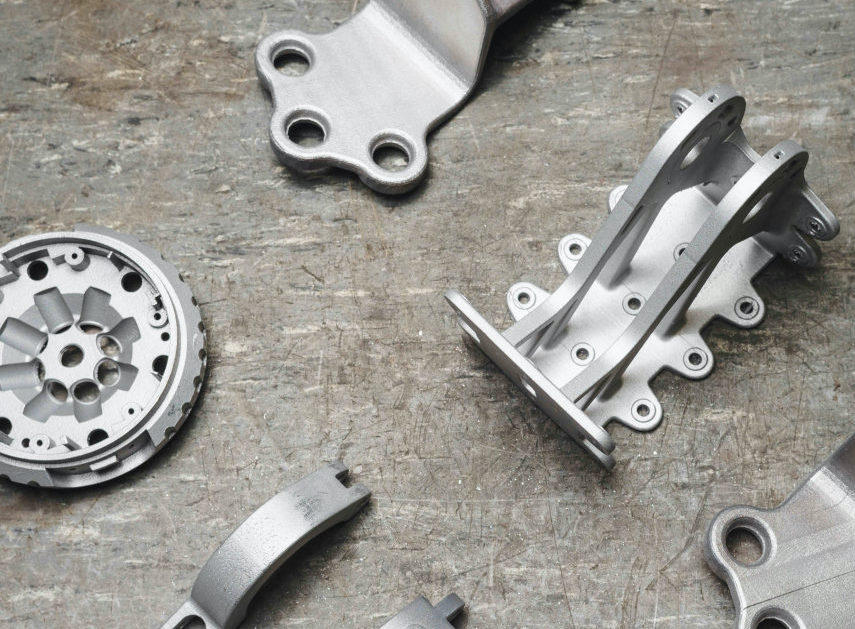 It is he who gives the final product one or another physical property.
It is he who gives the final product one or another physical property.
Main characteristics of metal 3D printing
Metal 3D printers are used in large-scale production. They find their application in design offices, engineering shops and research institutes. In civilian areas, metal printers are installed in medical centers. nine0003
Additive printing technology allows you to make complex interlaced designs in a single piece. For example, in 2020 NASA made a "space fabric". The material resembles chain mail in texture with a very complex internal pattern. The difference between ancient armor and modern material lies in the production technology. Chain mail was woven, linking each link by hand. The space fabric was printed in one pass.
Space cloth
3D printed metal products are valued for their characteristics:
- High strength finished part. Density indicators are 1.5 times higher than in metal casting.
- Complex geometry.
 You can print intricate shapes of bizarre geometry. For example, to make a high-strength chain without welding points.
You can print intricate shapes of bizarre geometry. For example, to make a high-strength chain without welding points. - Wide range of alloys and materials. From aluminum to titanium.
- Rough product surface. In some cases, this is a plus, not a minus.
- No tension in the metal, which is almost impossible to achieve with casting. nine0020
- Wide range of post-processing.
A separate line is the cost of the finished part. Powder printing does not require special equipment, as, for example, for casting. The desired part is loaded into the program memory, and after a short time it appears from the printer.
Printing Part
Printing Technology
There are several basic printing technologies:
- SLM is the basic metal powder printing technology. The part is formed by sintering the material in the inner chamber of the printing device under the influence of a laser. nine0020
- DMP is almost a complete analogue of the previous technology.
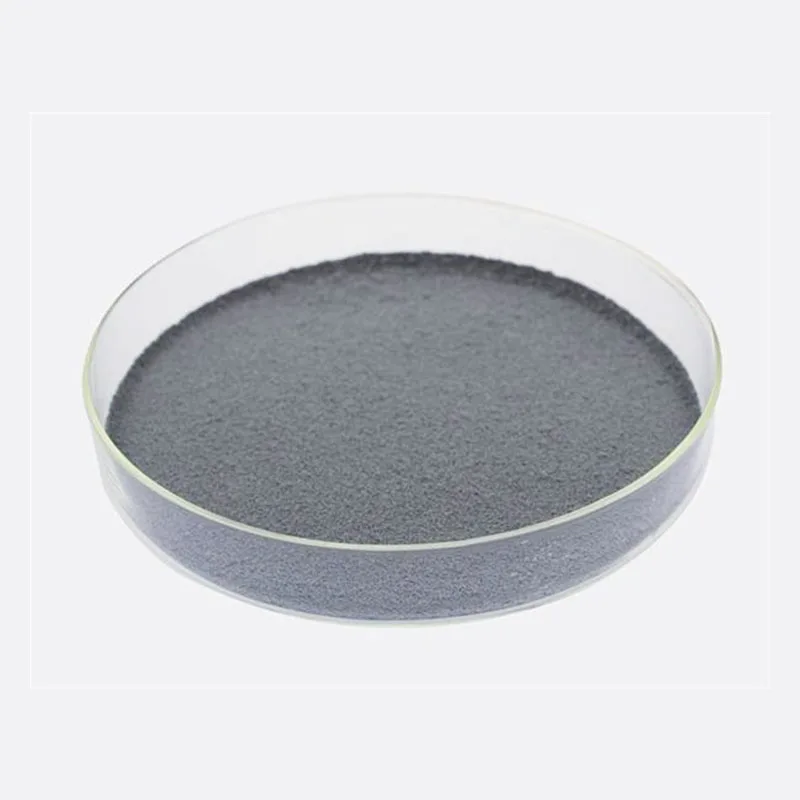 Such a solution can be found in 3D Systems printers.
Such a solution can be found in 3D Systems printers. - EBM is a technology in which the powder is sintered under the action of an electron beam gun.
There is a private variant of SLM called DMLS. The second option implies that the powder particles are heated to lower temperatures. The material does not become liquid.
Help! nine0059 The SLM printing technology was developed by Wilhelm Meiners, Konrad Wissenbach, as well as Dieter Schwarz and Matthias Fokele. Subsequently, the founder Dieter Schwarz left for SLM Solutions GmbH, which is one of the world leaders in the production of 3D metal printers.
SLM Solutions 3D printer operator
Types of metal powders for 3D printing
There are about 20 most famous metal powder materials that are used for various tasks. For example, a technologist can take a titanium alloy to create the frame of a future assembly, and make the walls and insides of the mechanism from aluminum. Get a strong and lightweight design with the desired performance characteristics. nine0003
Get a strong and lightweight design with the desired performance characteristics. nine0003
Metal powders are actively used in the aviation, automotive, and aerospace industries. With the help of additive technologies, engineers create complex assemblies and innovative parts. The main types of powders: titanium, steel, aluminum, cobalt-chromium, nickel.
Important! When we say "powder", we mean an alloy based on one of the listed metals.
Titanium powder for 3D printer
The most common alloy is Ti6Al4V. It has excellent performance characteristics. Titanium alloy is rightfully considered one of the strongest and most durable among other metals. The finished product has a density of 4500 kg/m. Tensile strength ratings up to 900 MPa. The maximum temperature is up to +1100 °C. The material is valued for its lightness and reliability. It is often used in the aircraft and space industries.
Steel
Tool steel is used everywhere. The most common alloys: 1.2343, 1.2344, 1.2367, 1.2709. With the help of this material, molds for casting, various tools are made: cutters, measuring dies and tooling. Typically, steel alloys contain from 0.7% carbon. This makes the material more viscous. End products receive increased strength and hardness. nine0003
The most common alloys: 1.2343, 1.2344, 1.2367, 1.2709. With the help of this material, molds for casting, various tools are made: cutters, measuring dies and tooling. Typically, steel alloys contain from 0.7% carbon. This makes the material more viscous. End products receive increased strength and hardness. nine0003
Aluminum and alloys
This material is considered one of the cheapest lithium alloys on the market. The most common powders are AlSi10Mg, AlSi12. This material has several advantages: high resistance to corrosion, thermal conductivity, fluidity. The alloy is a good conductor of electricity. It is used in the manufacture of overall thin-walled parts.
Cobalt Chromium
CoCr alloy is one of the most common materials used in aircraft and missile applications. The alloy has high mechanical properties. Various components and parts with complex geometry are made from it. Cobalt-chromium alloys are used in the manufacture of clasp prostheses. nine0003
Nickel alloys
The main feature of nickel is the ability to dissolve other metals without losing strength. It is this characteristic that makes it one of the most common in various industries. For example, heat-resistant blades for jet engines are made from NiCr alloy. Some nickel alloys are comparable in melting point to titanium powder. Their upper threshold reaches +1100 °C. The most common nickel alloys are Inconel 625, Inconel 718, Inconel 939, Invar 36, NX.
It is this characteristic that makes it one of the most common in various industries. For example, heat-resistant blades for jet engines are made from NiCr alloy. Some nickel alloys are comparable in melting point to titanium powder. Their upper threshold reaches +1100 °C. The most common nickel alloys are Inconel 625, Inconel 718, Inconel 939, Invar 36, NX.
Other alloys and metals
Among other common metals, two more groups can be distinguished:
- Stainless steel alloys. Powders with a chromium content of at least 12%. These include 15-5PH, 17-4PH, AISI 410, AISI 304L, AISI 316L, AISI 904L.
- Non-ferrous alloys. Metal powder with the addition of copper or tin. Such materials include CuSn6, CuSn10.
There are also less demanded alloys, for example, based on tungsten. nine0003
Interesting! There are precious metal powders. In particular, Cooksongold created platinum powder for jewelry printing. Finished products receive a 950 test and boast the best mechanical characteristics.
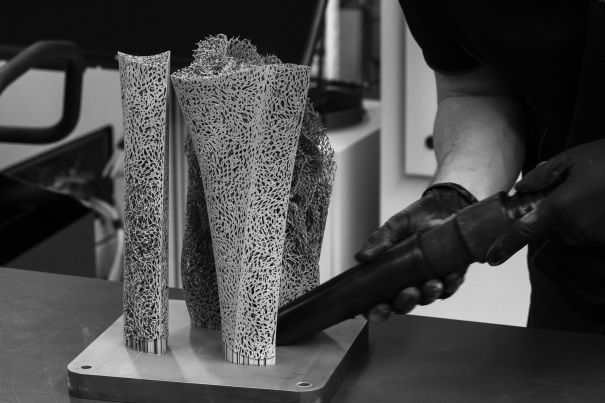
Platinum jewelry
Production of powder for a 3D printer
The cost of manufacturing a material for "refueling" a 3D printer for metal is higher than, for example, a filament or a photopolymer. This explains the price of the finished product. At the factory, the hot melt of metal is "sprayed" with a jet of gas, water or plasma to obtain a powder. This greatly complicates and increases the cost of production. nine0003
Interesting! In 2019, a group of Russian scientists from NUST MISiS developed a new method for making titanium and aluminum powder. In its production, a planetary mill is used. They get, as it were, a semi-finished product that reaches the desired mechanical properties already in the printing process.
SLM machine operators use the powder several times. In particular, they recycle marriage, and also re-produce support. And this is about 10% of the total mass of the printed blank.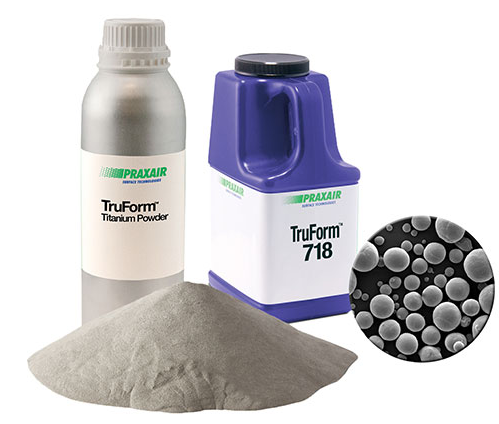 The remains are crushed and processed on special installations - atomizers. nine0003
The remains are crushed and processed on special installations - atomizers. nine0003
Atomizer
There are a large number of powders based on metal alloys. All of them solve certain problems. It is necessary to select the material based on the physical, mechanical and chemical properties of the final product.
- March 22, 2021
- 3716
Get expert advice
Metal 3D printing materials
Metal powders
for metal 3D printing
Quality metal powders for 3D printing
are the basis of a successful growing process
The quality of the metal powder for 3D printing determines the physical properties of the future part, its quality and the success of the entire growing process. The main alloys used for metal 3D printing:
Less commonly used for metal 3D printing are precious metal alloys or high-strength and special alloys based on:
-
Gold
-
Copper
-
Tungsten
-
Tantalum
Metal powders for 3D printing must meet the following specifications for optimal results:
-
Have a stable fractional composition.

-
Be spherical
-
High purity alloy
Fractional composition of powders for metal 3D printing
To ensure a stable sintering process, powders for 3D printing must have a stable fractional composition within a given tolerance. The particle size of the powders used depends on the layer thickness, the material used, the power and the focus size of the laser. Particle size affects part appearance, maximum detail, and growth rate.
-
25-45µm is the most commonly used size range of 3D printing powders and achieves optimal detail and print speed
-
10-25 microns - metal powders of this fraction are used when using refractory alloys and jewelry parts to obtain greater detail.
-
30-70 microns - used to achieve higher print speeds at high layer thicknesses. These powders generally require more laser power.
Spherical powders for metal 3D printing
The shape of the powder particles has a great influence on the quality of products obtained by metal 3D printing.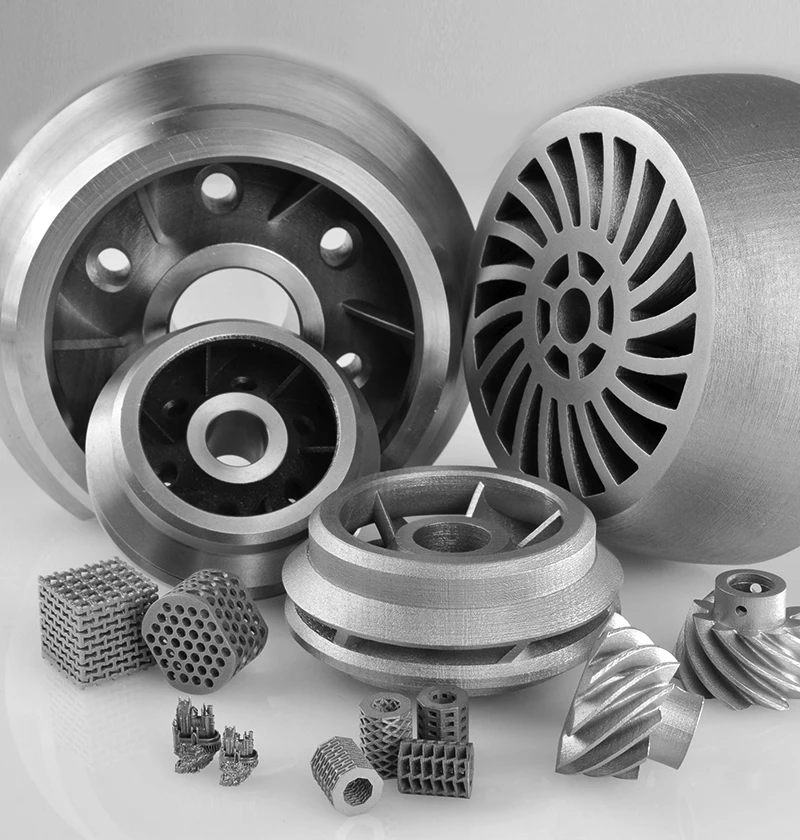 The form influences the behavior of the powder during the application of the layer, the tendency to caking and the formation of lumps and the bulk density of the powder. Spherical powders have high fluidity. nine0003
The form influences the behavior of the powder during the application of the layer, the tendency to caking and the formation of lumps and the bulk density of the powder. Spherical powders have high fluidity. nine0003
Only spherical powders allow you to apply a perfectly uniform and even layer. If there are changes in the shape of the particles, streaks and ruts may appear in the layers. In the case of powder caking, lumps may form, which can lead to protrusions on the sintered part. Such protrusions can damage the squeegee or create a hole in a large part.
The sphericity of metal 3D printing powders affects the bulk density. The bulk density of the spherical powder for stainless steel 3D printing must be at least 4.5g/cm³. Given the density of the finished part 7.9g / cm³, it turns out that the powder decreases in volume by more than 1.5 times. Thus, in order to reduce the residual porosity of a part during 3D metal printing, it is important to use only spherical metal powders.